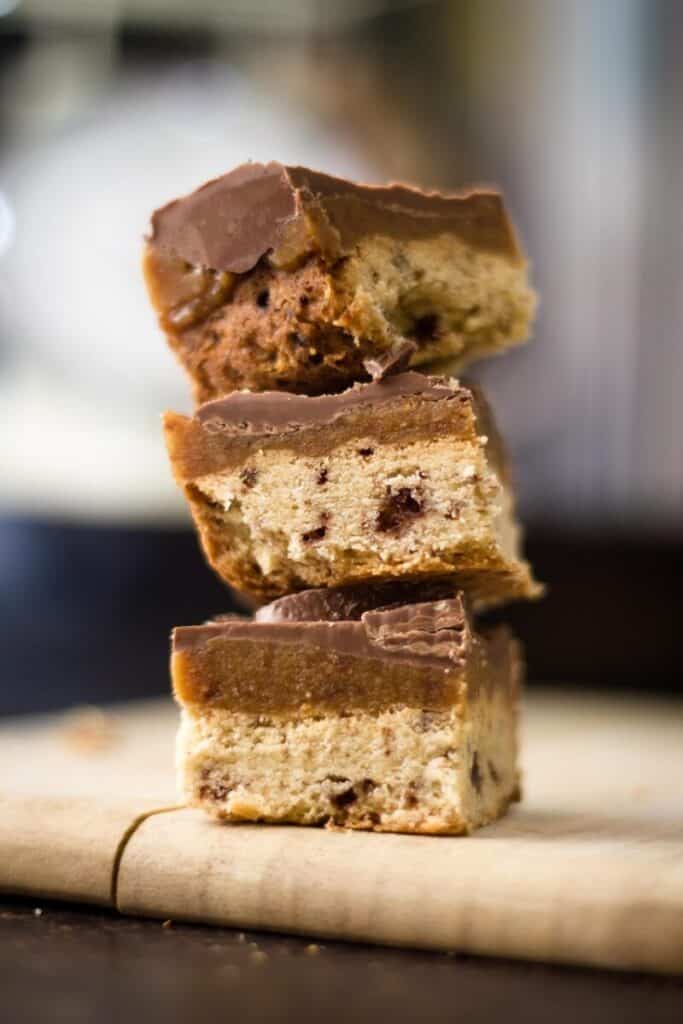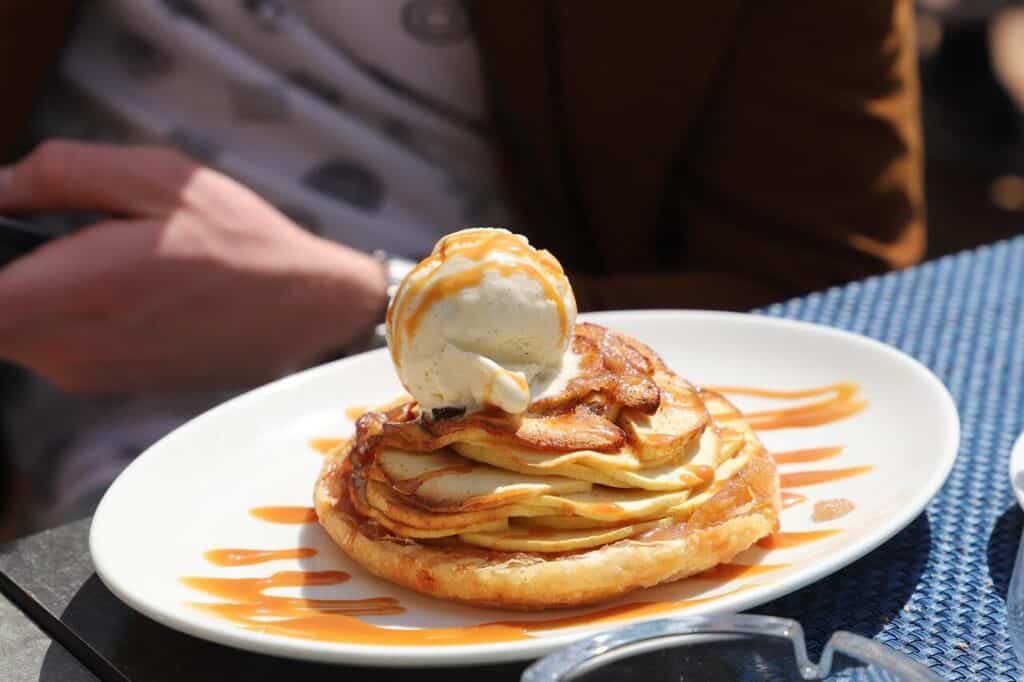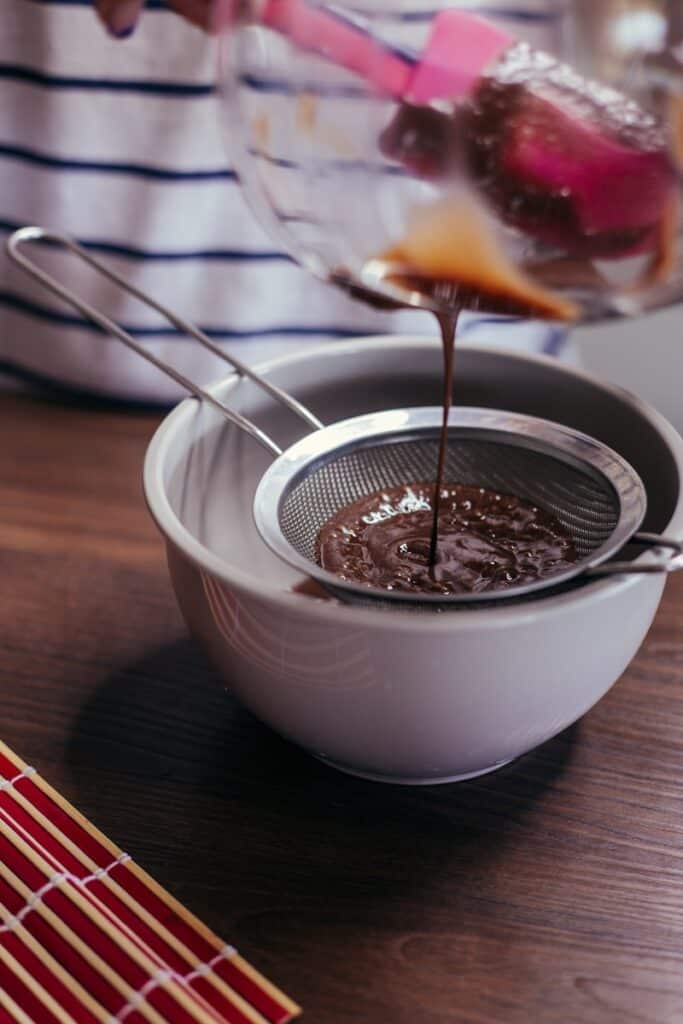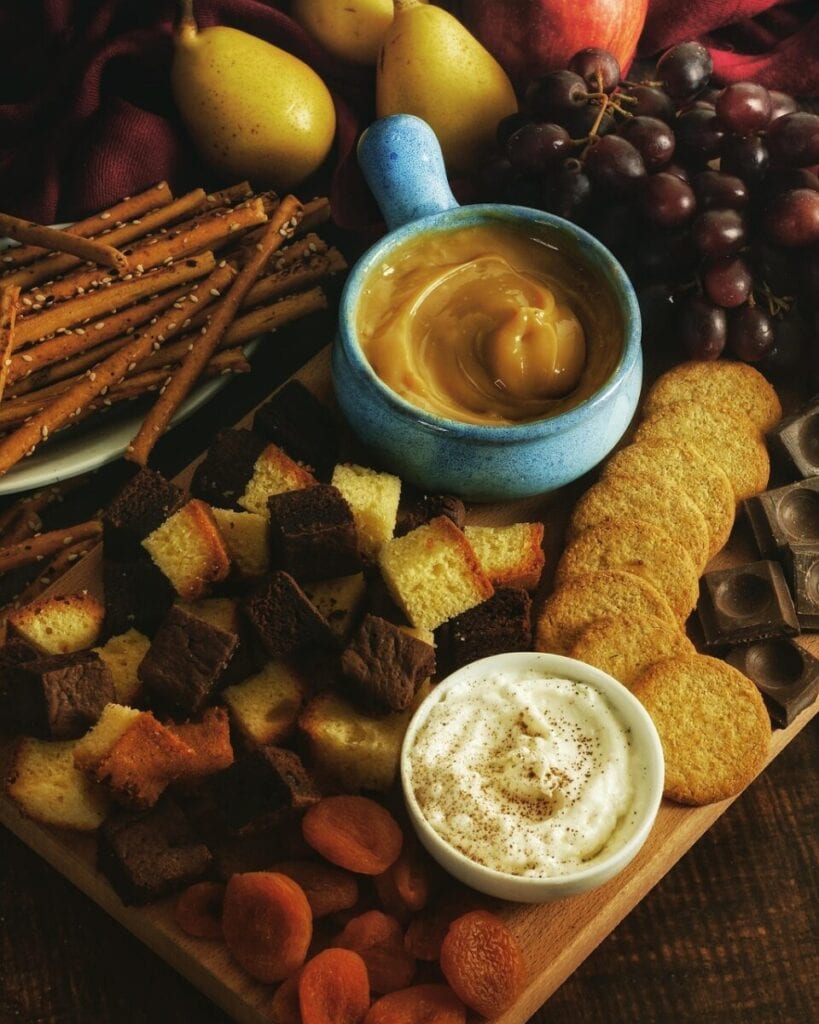A ciência do caramelo perfeito: Um guia técnico para dominar o cozimento do caramelo
Introdução
Fazer um caramelo perfeito não significa memorizar uma receita. Trata-se de entender uma reação química fascinante. O caramelo perfeito acontece quando você controla como o açúcar se decompõe quimicamente - um processo chamado pirólise.
Muitos cozinheiros domésticos têm dificuldades com o caramelo que queima, fica granulado ou cozinha de forma desigual. Até mesmo chefs profissionais enfrentam esses problemas. Esse O guia explica a ciência por trás do processo. Vamos além das etapas simples para mostrar a você o que realmente está acontecendo.
Você aprenderá os princípios técnicos do cozimento do caramelo. Esse conhecimento o ajudará a ser consistente, resultados perfeitos sempre. Isso não é mágica - é ciência que você pode usar.
Este artigo aborda a química da caramelização. Compararemos os dois principais métodos de cozimento e explicaremos por que o controle de temperatura é tão importante. Você também aprenderá a corrigir problemas comuns usando princípios científicos. Depois de entender esses conceitos, você deixará de ser um cozinheiro e passará a ser um especialista em caramelo.
A química básica
Quebrando o açúcar
A caramelização ocorre quando o açúcar é decomposto pelo calor. Esse processo é chamado de pirólise. É uma transformação complexa que ocorre quando você aquece o açúcar a altas temperaturas.
Essa reação ocorre sem aminoácidos. É isso que a torna diferente da reação de Maillard. A reação de Maillard escurece alimentos como pão e carne grelhada, mas precisa de açúcares e proteínas.
O processo começa com a inversão. O açúcar de mesa (sacarose) se decompõe quando aquecido. Ele se divide em dois açúcares mais simples: frutose e glicose. Essa divisão é o primeiro passo para um sabor complexo.
Como o sabor se desenvolve
À medida que o aquecimento continua além do estágio de inversão, esses açúcares simples começam a perder água. As moléculas se desidratam e começam a reagir umas com as outras. Isso cria milhares de novos compostos.
Esse processo é chamado de polimerização. Ele cria o sabor e o cheiro característicos do caramelo. Podemos identificar compostos específicos que definem o perfil do caramelo. O diacetil lhe dá uma nota amanteigada. O maltol acrescenta um caráter tostado. Vários furanos contribuem com aromas de nozes.
A temperatura e o tempo controlam diretamente o desenvolvimento do sabor.
- Estágio inicial: O açúcar tem um sabor puramente doce - apenas uma dimensão do sabor.
- Estágio intermediário: Quando o caramelo fica dourado, aparecem notas amanteigadas e tostadas.
- Estágio tardio: A cor âmbar mais profunda traz aromas de nozes, levemente amargos e mais complexos.
- Estágio de cozimento excessivo: O excesso de calor cria sabores fortes e extremamente amargos.
Por que a água é importante
No cozimento com caramelo úmido, a água tem duas finalidades. Ela atua como um catalisador e um mecanismo de controle. A água funciona como um amortecedor, garantindo que todo o açúcar se dissolva antes que a temperatura aumente significativamente.
Essa solução de xarope de açúcar permite um aquecimento uniforme por convecção. A água distribui o calor uniformemente. Isso evita que uma única área fique muito quente e queime muito cedo - um problema comum com o método seco.
A evaporação da água é fundamental e leva tempo. A temperatura do xarope permanece estável no ponto de ebulição da água (100°C / 212°F) até que toda a água evapore. Só então a temperatura do açúcar pode subir para a faixa de caramelização.
Os dois caminhos do caramelo
O método seco
O método seco significa aquecer o açúcar diretamente em uma panela sem adicionar líquido. É rápido, direto e implacável. Os chefs experientes preferem essa técnica.
Aqui, o calor se move principalmente por condução. O fundo da panela aquece os cristais de açúcar que toca, derretendo-os. Esse açúcar derretido aquece os cristais próximos a ele.
O principal desafio é o aquecimento desigual. Pontos quentes se formam facilmente, especialmente em panelas finas. Esses pontos podem queimar parte do açúcar antes mesmo de o restante derreter. Isso gera resultados amargos e inconsistentes.
Esse método funciona melhor para pequenos lotes e açúcar fiado. Também é bom quando você precisa de rapidez. Você verá o açúcar começar a derreter primeiro nas bordas da panela. À medida que ele derreter, mexa as partes derretidas no açúcar não derretido para espalhar o calor. A primeira fumaça fraca indica que o processo está avançando rapidamente.
O método úmido
O método úmido começa com a dissolução do açúcar na água para fazer xarope antes do aquecimento. Essa técnica oferece mais controle e uniformidade, mas exige paciência.
A transferência de calor ocorre principalmente por convecção. A água cria um meio fluido que circula. Isso aquece todos os cristais de açúcar na mesma velocidade. Isso reduz drasticamente o risco de queimaduras localizadas.
O principal desafio é a cristalização indesejada. Cristais de açúcar não dissolvidos nas laterais da panela podem causar problemas. As impurezas também podem causar problemas. Elas atuam como pontos de partida para a formação de cristais. Isso pode causar uma reação em cadeia que transforma o lote inteiro em uma massa sólida e granulada.
Esse método é perfeito para iniciantes e grandes lotes. Também é ideal para molhos de caramelo ou doces onde você quiser perfeitamente consistência clara e uniforme.
Tabela de comparação de métodos
Esta tabela mostra os principais diferenças técnicas entre os métodos seco e úmido. Use-o para escolher a técnica certa para suas necessidades.
Tabela 1: Método de caramelo seco vs. úmido: Um confronto técnico
Recurso | Método seco | Método úmido |
Risco primário | Aquecimento e queima irregulares | Cristalização indesejada |
Transferência de calor | Condução | Convecção |
Velocidade | Rápido (5 a 10 minutos) | Mais lento (15 a 20 minutos) |
Controle | Menos tolerante, requer atenção constante | Mais tolerante, mais fácil de controlar a temperatura |
Melhor para | Açúcar fiado, gaiolas de caramelo, usuários experientes | Molhos, doces, iniciantes, grandes lotes |
Textura final | Pode ser um pouco mais quebradiço | Geralmente mais suave e mais fluido |
Controle de temperatura
A temperatura controla tudo
A temperatura é o fator mais importante no cozimento do caramelo. De uma perspectiva científica, a temperatura mede a energia média das moléculas de açúcar.
Temperaturas mais altas significam movimento molecular mais rápido e colisões mais energéticas. Isso acelera as reações de pirólise. Você obtém cores mais escuras e sabores mais complexos mais rapidamente. Eventualmente, compostos amargos se desenvolvem se as temperaturas ficarem muito altas.
Um termômetro digital para doces confiável é essencial para a precisão e a consistência. Ele elimina as suposições e permite que você pare de cozinhar exatamente no momento certo para suas necessidades específicas.
Mapa do Palco Caramelo
A jornada do xarope de açúcar claro até o caramelo escuro segue faixas de temperatura específicas. Cada estágio tem cor, cheiro, sabor e usos distintos. Compreender essa progressão é fundamental para o domínio do processo.
Tabela 2: Estágios técnicos da caramelização
Estágio | Faixa de temperatura (°C / °F) | Pistas visuais e olfativas | Perfil do sabor | Casos de uso técnico primário |
Líquido transparente / xarope | 150-160°C / 300-320°F | Líquido claro e borbulhante. O cheiro é puramente doce. | Doce, unidimensional. | Estágio básico para caramelo úmido. |
Claro / Loiro Caramelo | 165-170°C / 330-340°F | Cor de palha pálida a dourado claro. Aroma levemente tostado. | Doce com complexidade sutil. | Esmaltes, molhos leves, cobertura de crème brûlée. |
Médio / Âmbar Caramelo | 170-175°C / 340-350°F | Cor âmbar/cobre rica. Aroma amanteigado e de nozes. | Doce equilibrado e levemente amargo. | Molho de caramelo clássico, pudim, pralinês. |
Escuro / Mogno Caramelo | 175-180°C / 350-355°F | Marrom-avermelhado profundo. Aroma pronunciado de nozes, quase defumado. | Complexo, visivelmente amargo, menos doce. | Bases aromatizantes, elementos de caramelo amargo em sobremesas. |
Preto / Caramelo queimado | 185°C+ / 365°F+ | De marrom escuro a preto. Fumaça acre e queimada. | Extremamente amargo e desagradável. | Descartar. Usado em alguns deglaçamentos salgados (raramente). |
Entendendo o cozimento com transferência
O cozimento com transbordamento é um conceito fundamental. O caramelo e a frigideira mantêm um calor significativo mesmo depois de retirados da fonte de calor.
Esse calor restante continua a cozinhar o caramelo. Ele aprofunda a cor e o sabor por mais 30 a 60 segundos. Se você esperar a cor perfeita no fogão, ele estará cozido demais quando esfriar.
A técnica profissional significa antecipar esse efeito. Sempre interrompa o cozimento e retire a panela do fogo pouco antes de atingir a cor desejada. Para molhos, adicionar creme ou manteiga também interrompe o cozimento. Mas o princípio permanece o mesmo.
A ciência dos ingredientes
Diferentes tipos de açúcar
A maioria das receitas pede açúcar branco granulado (sacarose). No entanto, o tipo de açúcar utilizado afeta muito a caramelização e o produto final. Nem todos os açúcares têm o mesmo comportamento químico.
A sacarose é o padrão. É formada por uma molécula de glicose e uma molécula de frutose unidas. Ela carameliza em uma temperatura relativamente alta, em torno de 160°C (320°F).
A frutose (açúcar da fruta) tem um comportamento muito diferente. É uma única molécula de açúcar que carameliza em uma temperatura muito mais baixa - cerca de 110°C (230°F). Isso faz com que ela queime muito rapidamente se você não tomar cuidado.
O xarope de glicose (geralmente vendido como xarope de milho) é uma forma de açúcar invertido. Ele contém moléculas individuais de glicose e resiste fortemente à cristalização. É por isso que ele é frequentemente adicionado em pequenas quantidades aos caramelos à base de sacarose. Ele garante uma textura final suave e estável.
O açúcar mascavo é sacarose com adição de melaço. O melaço traz umidade, minerais e ácidos. Esses componentes fazem com que ele caramelize um pouco mais rápido do que o açúcar branco. Eles também contribuem com um sabor distinto e complexo.
Tabela de propriedades do açúcar
Esta tabela compara como os diferentes açúcares se comportam durante o cozimento do caramelo. O conhecimento dessas propriedades permite que você modifique as receitas com confiança.
Tabela 3: Análise comparativa dos açúcares no cozimento do caramelo
Tipo de açúcar | Estrutura química | Temp. de caramelização | Risco de cristalização | Contribuição para o perfil de sabor |
Sacarose | Dissacarídeo (glicose + frutose) | Alta (~160°C) | Alta | Sabor limpo e clássico de caramelo. |
Xarope de glicose | Monossacarídeo | Muito alta (~160°C) | Muito baixo | Menos doce; usado principalmente para textura/estabilidade. |
Frutose | Monossacarídeo | Baixa (~110°C) | Médio | Notas muito doces e frutadas; queima facilmente. |
Açúcar mascavo | Sacarose + Melaço | Menor que a sacarose | Médio | Complexo, melaço, notas levemente ácidas. |
Como os aditivos funcionam
Outros ingredientes além do açúcar desempenham papéis químicos importantes. Esses aditivos não servem apenas para dar sabor - eles são ferramentas funcionais para controlar a textura e o comportamento do caramelo.
Ácidos como suco de limão ou creme de tártaro atuam como agentes interferentes. Eles ajudam a inverter a sacarose, quebrando-a em glicose e frutose. A presença dessas moléculas de açúcar de tamanhos diferentes impede a formação de cristais uniformes. Isso efetivamente impede a cristalização indesejada em caramelos úmidos.
As gorduras, como a manteiga e o creme de leite, têm várias funções. Em primeiro lugar, elas interrompem o processo de cozimento ao reduzir rapidamente a temperatura. Elas também acrescentam riqueza e sabor. O mais importante é que elas criam uma emulsão. Os glóbulos de gordura e a água ficam suspensos no açúcar, criando a textura suave e fluida da clássica calda de caramelo.
O sal faz mais do que temperar. É um potente realçador de sabor. Ele equilibra a doçura intensa e o amargor emergente do caramelo. Isso cria um sabor final mais complexo e agradável. Uma pequena quantidade de sal pode transformar um bom caramelo em um ótimo caramelo.
Solução de problemas científicos
Caramelo granulado ou cristalizado
Causa científica: Essa falha comum ocorre devido à nucleação indesejada. Cristais de açúcar perdidos nas laterais da panela, impurezas de colheres ou agitação excessiva podem fornecer pontos de partida para a formação de cristais. Isso desencadeia uma reação em cadeia que transforma a mistura inteira em uma massa granulada.
Solução científica: A prevenção funciona melhor. Comece com uma frigideira perfeitamente limpa. Ao fazer caramelo úmido, use um pincel embebido em água para lavar as laterais da panela. Isso dissolve os cristais perdidos. Para maior proteção, adicione um agente interferente, como xarope de milho ou uma pequena quantidade de ácido. Se ocorrer a cristalização, às vezes é possível consertá-la. Acrescente algumas colheres de sopa de água para dissolver os cristais e aqueça suavemente para que o xarope volte a se formar antes de tentar novamente.
Queimado em um ponto
Causa científica: Isso se deve à condução desigual do calor. Um ponto quente no fundo da panela faz com que a pirólise se acelere drasticamente nessa área. Ela passa dos estágios desejados para o território queimado antes do restante da panela. o açúcar derreter completamente ou caramelizar. Isso acontece mais com o método seco e com panelas de fundo fino.
Solução científica: Use uma panela de fundo grosso feita de material que conduza bem o calor. Cobre ou aço inoxidável revestido de alumínio funcionam bem. Isso garante um aquecimento uniforme em toda a superfície. Se estiver usando o método seco, mexa constantemente quando o açúcar começar a derreter para redistribuir o calor. Infelizmente, o caramelo queimado não pode ser consertado. Os compostos químicos agressivos não podem ser removidos. Você deve descartar o lote e limpar a panela completamente antes de começar de novo.
Molho apreendido ou dividido
Causa científica: O problema é o choque térmico. Adicionar creme de leite ou manteiga fria a um caramelo extremamente quente (que pode chegar a 175°C / 350°F) faz com que o açúcar se solidifique quase que instantaneamente devido à drástica queda de temperatura. No molho dividido, a gordura do creme de leite ou da manteiga não se mistura adequadamente com a água e o açúcar. Isso cria uma mistura gordurosa e separada.
Solução científica: Sempre aqueça o creme de leite ou derreta a manteiga antes de adicionar ao caramelo quente. Isso reduz a diferença de temperatura. Retire o caramelo do fogo e adicione o líquido quente muito lentamente enquanto bate constante e vigorosamente. Essa adição gradual promove a formação de uma emulsão estável. Se o molho endurecer, retorne a panela ao fogo bem baixo e continue batendo. O calor suave deve derreter novamente o caramelo endurecido, permitindo que ele forme um molho suave.
Conclusão: De cozinheiro a cientista
Passamos das receitas para o laboratório de cozinha. Exploramos a química da pirólise, comparamos as técnicas de condução e convecção e mapeamos os estágios de caramelização por temperatura.
Agora você tem mais do que instruções - você tem conhecimento científico para diagnosticar problemas e controlar os resultados. A compreensão dos diferentes açúcares e aditivos lhe dá o poder de criar, adaptar e aperfeiçoar suas próprias criações de caramelo.
Aceite o processo como um delicioso experimento. Confie na ciência. Preste muita atenção aos sinais visuais e aromáticos. Aproveite as doces recompensas de sua nova experiência na culinária com caramelo.
- Wikipedia - Caramelização https://en.wikipedia.org/wiki/Caramelization
- Wikipedia - Pirólise https://en.wikipedia.org/wiki/Pyrolysis
- Instituto de Ciência e Tecnologia de Alimentos (IFST) - Carboidratos: Caramelização https://www.ifst.org/lovefoodlovescience/resources/carbohydrates-caramelisation
- BAKERpedia - Caramelização https://bakerpedia.com/processes/caramelization/
- ScienceDirect - Caramelização em alimentos e bebidas https://www.sciencedirect.com/science/article/abs/pii/0308814694901880
- PMC (PubMed Central) - Pirólise de açúcar de mesa https://pmc.ncbi.nlm.nih.gov/articles/PMC3808891/
- Culinary Institute of America - Programa de Ciências Culinárias https://www.ciachef.edu/cia-culinary-science-bachelors-degree-program/
- Johnson & Wales University - Faculdade de Inovação e Tecnologia de Alimentos https://www.jwu.edu/academics/colleges/college-of-food-innovation-technology.html
- Institute of Culinary Education - Campus de Nova York https://www.ice.edu/campuses/newyork
- ResearchGate - Caramelização em alimentos: Uma perspectiva de qualidade e segurança alimentar https://www.researchgate.net/publication/322187507_Caramelization_in_Foods_A_Food_Quality_and_Safety_Perspective









